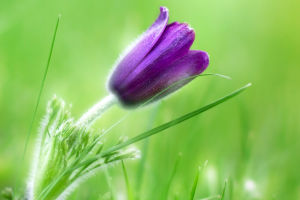Distinguish Your Mushroom!
Foraging for wild mushrooms can be a delightful adventure, bringing you closer to nature while rewarding you with delicious culinary ingredients. However, it's crucial to identify edible mushrooms accurately to avoid any toxic mishaps!
While those toxic mushrooms have bright colors and might inspire you, it is important to note that over 100 people die every year because they ate the wrong mushrooms! This is why you need to be able to recognize them! Let's check together 4 different common types.
1. Porcini mushrooms (Boletus edulis)
Porcini mushrooms, also known as king bolete or cep, are prized for their nutty flavor and meaty texture. They have a large brown cap, which can grow up to 12 inches in diameter, the cap is smooth and slightly sticky when wet. Underneath, they have sponge-like pores instead of gills, which start white and turn yellowish-green with age while their thick, white-to-brownish stem is bulbous at the base. Porcini mushrooms thrive in mixed woodlands, especially near coniferous and deciduous trees and they are most commonly found from late spring to autumn, often after rain showers.
Foraging Porcini Mushrooms (and drying them)
Video by Lovely Greens
2. Chanterelles (Cantharellus cibarius)
Chanterelles are easily recognizable by their vibrant golden-yellow color and trumpet-shaped caps with wavy edges and their false gills running down the stem, giving them a distinctive look. Chanterelles emit a fruity aroma, sometimes compared to apricots. These mushrooms prefer mossy, damp areas in hardwood forests and are typically found from late spring through autumn. They often grow near oaks, birches, and conifers.
3. Morels (Morchella)
Morels are among the most coveted wild mushrooms, known for their honeycomb-like cap filled with pits and ridges. They are hollow from the tip of the cap through the stem, which is usually white to pale. Morels favor woodlands and are often found in disturbed grounds like areas recently affected by forest fires, most probably you'll find them near ash, elm, and apple trees.
4. Caesar's mushrooms (Amanita caesarea)
Known as Amanita caesarea, the Caesar's mushroom is revered in Mediterranean cuisine for their delicate, slightly sweet flavor and tender texture. This mushroom is easily identifiable by its vibrant orange-to-red cap, which is smooth and convex when young, flattening out as it matures. The gills beneath the cap are striking yellow, free from the stem, which is also yellow and features a distinctive sack-like volva at the base.
This volva is a key identification feature, as it envelops the base of the mushroom. They usually prefer sunny clearings in deciduous and mixed forests. They are most commonly found under oak, chestnut, and beech trees. These mushrooms tend to appear in late summer and autumn, particularly in regions with a Mediterranean climate.
Caesar's mushroom Salad Recipe
Enjoying your foraged Caesar's mushroom in a fresh, simple salad allows its delicate flavor to shine. Here's a quick recipe:
Ingredients:
- 200g Caesar's mushroom
- 2 tbsp extra virgin olive oil
- 1 tbsp lemon juice
- Salt and pepper to taste
- Fresh parsley, chopped
- Parmesan shavings (optional)
The Food of the Gods - the Royal Mushroom, Caesar's Mushroom, Preparing a Mushroom Salad
Video by Abetina Cookery
How to Do:
Gently clean the Caesar's mushroom with a damp cloth to remove any dirt. After slicing them thinly, whisk together the olive oil, lemon juice, salt, and pepper in a small bowl. Then arrange the sliced mushrooms on a serving plate and drizzle the dressing over the mushrooms. Finally, sprinkle chopped parsley over the top and add Parmesan shavings if desired. Now, feel free to enjoy it!
By familiarizing yourself with these edible mushrooms and following safety guidelines, you can confidently forage and enjoy nature's bounty. Always remember, when in doubt about a mushroom's identity, it's best to leave it behind!


